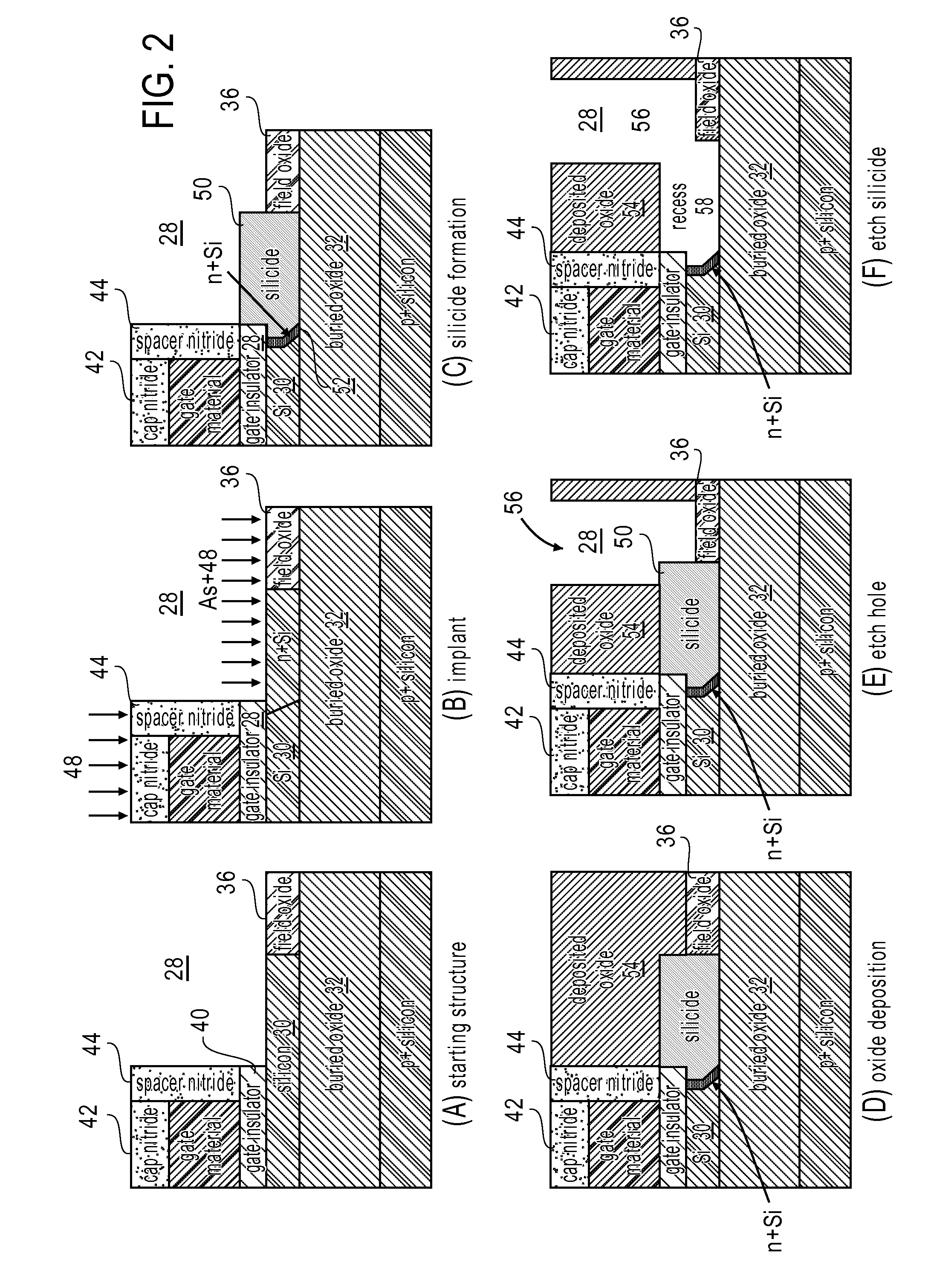Process for fabricating a field-effect transistor with doping segregation used in source and/or drain
a field-effect transistor and doping segregation technology, applied in the direction of semiconductor devices, electrical apparatus, semiconductor/solid-state device details, etc., can solve the problem of plow approach, achieve low work function, improve transistor performance, and improve the effect of transistor performan
- Summary
- Abstract
- Description
- Claims
- Application Information
AI Technical Summary
Benefits of technology
Problems solved by technology
Method used
Image
Examples
Embodiment Construction
[0035]Discussed herein is a method for forming a FET using impurity segregation in one or more sources and / or drains, and replacing the reacted material with one or more other materials.
[0036]In one embodiment of the invention, one or more of the source(s) and / or drain(s) of the FET is formed so that impurities, for example donor impurities for an n-type source and / or drain, or for example acceptor impurities for a p-type source and / or drain, are incorporated into the semiconductor in the region in which one or more source(s) and / or drain(s) is to be formed. For example, ion implantation can be used to cause the impurities to be placed in exposed semiconductor, using a self-aligned process. Or, for example, a layer rich in the desired impurity or impurities may be placed proximate to the semiconductor in the region in which the source(s) and / or drain(s) is to be formed, then heat may be applied to cause the impurity or impurities to diffuse into the proximate semiconductor. Or, for ...
PUM
 Login to View More
Login to View More Abstract
Description
Claims
Application Information
 Login to View More
Login to View More - R&D
- Intellectual Property
- Life Sciences
- Materials
- Tech Scout
- Unparalleled Data Quality
- Higher Quality Content
- 60% Fewer Hallucinations
Browse by: Latest US Patents, China's latest patents, Technical Efficacy Thesaurus, Application Domain, Technology Topic, Popular Technical Reports.
© 2025 PatSnap. All rights reserved.Legal|Privacy policy|Modern Slavery Act Transparency Statement|Sitemap|About US| Contact US: help@patsnap.com



